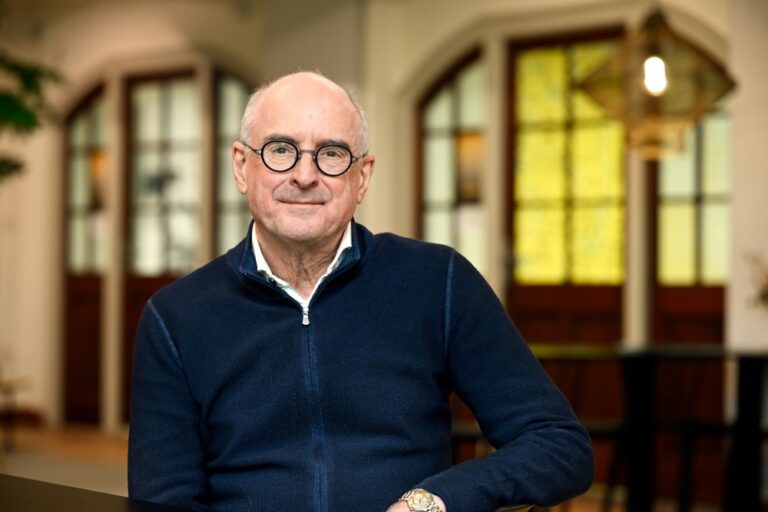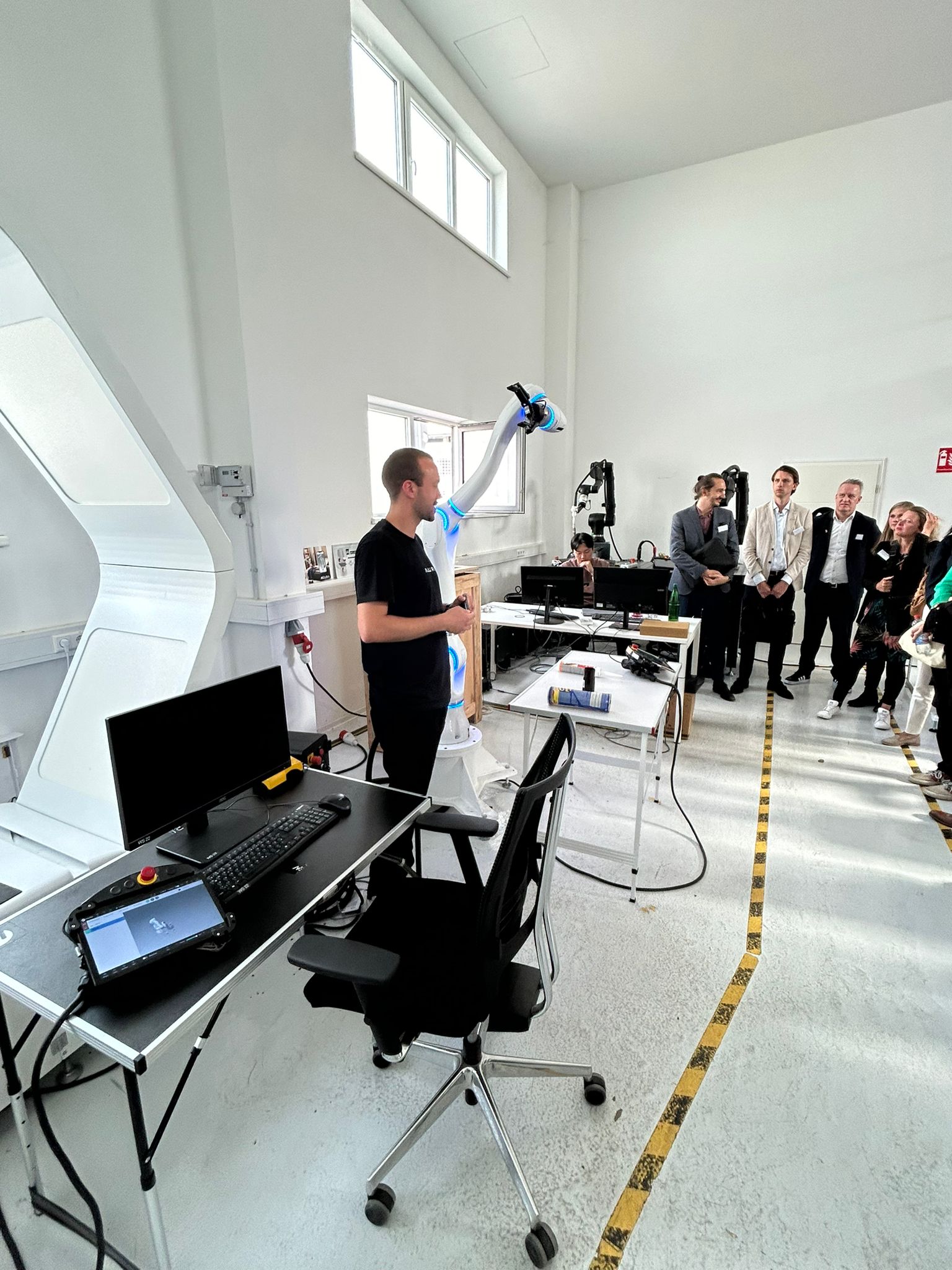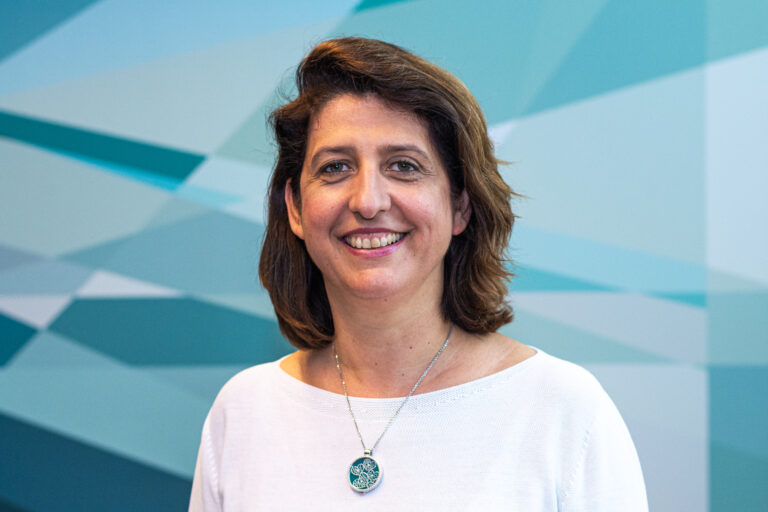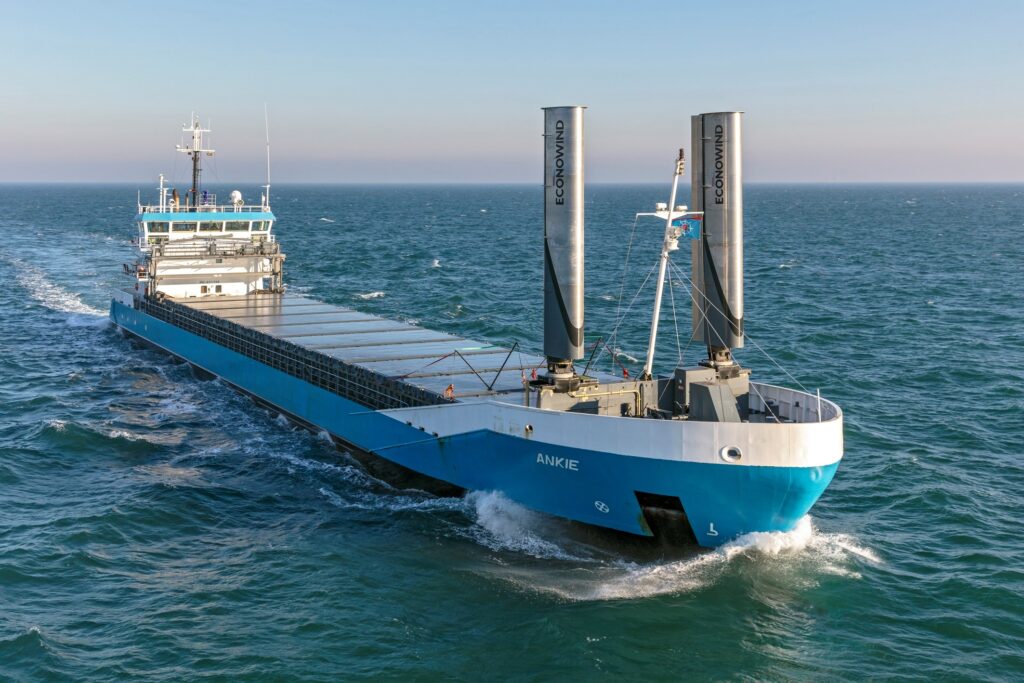Foto: JADS/Bart van Overbeeke
When Emile Aarts took on the chairmanship of the Human Centric AI Working Group over three years ago at the start of the coalition, it was already brimming with good ideas. Very ambitious ideas, where it was anything but certain whether they could be realised within a few years. But they managed to do that: at the end of 2020, the first ELSA labs were launched, where governmental authorities, companies, centres of expertise and the public work together on reliable, human centric AI that helps solve social problems. Emile recently passed the baton of leadership of the working group on to the new chair, Irvette Tempelman. A good time to look back.
What does human centric AI mean for you?
“Globally, a lot is happening in the artificial intelligence (AI) arena,” says Emile Aarts. “The US and China especially are very advanced in that regard. The focus in Europe is mainly on developing trustworthy and responsible AI that fits in well with European norms and values. It is crystal clear that the world needs AI applications that are reliable and help solve social problems: AI with a human dimension. Human centric AI, in other words.”
What has the Human Centric AI working group done in this regard?
“We didn’t merely discuss what is needed for achieving human centric AI. We’ve also worked on it from the start by bringing parties together and sharing information through publications, aiming to achieve targeted actions. As well as the AI Parade, I’d want to mention the ELSA labs in particular as an example. I’m proud that we – the Netherlands AI Coalition (NL AIC) – have put a lot of energy into developing and maturing a concept that enables the development of AI applications that don’t just meet legal requirements but that also fit in with what is ethically and socially desirable. And I’m extremely proud that we now have an active community of over twenty ELSA labs where the participants are not just governmental authorities, companies and centres of expertise, but also the people who eventually will be affected by the AI solutions.”
Does the ELSA concept for ELSA labs also lend itself to other countries?
“Absolutely. We get a lot of questions about it, from European countries in particular. We recently also spoke with a Canadian organisation that is considering setting up an ELSA-like cooperation to improve access to healthcare in the Horn of Africa. There are some interesting developments in the defence arena related to NATO too. So our initiative is catching on.”
How did you manage this in such a relatively short time?
“When the coalition was being set up, AI experts from various universities were already well aware of how important a human centric approach was, and they had clear ideas about it. The first idea of the ELSA labs concept was conceived within the UNL programme DiSa, which stands for Digitale Samenleving, or Digital Society. This let us, together with a few colleagues from the scientific community, draw up the broad outline for the ‘Human Centric Artificial Intelligence’ manifesto back in 2020. That manifesto was the first to list the seven criteria that an ELSA Lab should meet, which later paved the way for the ‘ELSA Labs Value Proposition Canvas’. So we didn’t start from scratch. The timing was perfect too, because the first five ELSA labs were funded by NWO (the Netherlands Organisation for Scientific Research) and the NL AIC programme called ‘Artificial Intelligence: Human centric AI for an inclusive society – Towards an ecosystem of trust’. That came partly from the kick-start resources that were made available to the NL AIC by the Ministry of Economic Affairs and Climate Policy.”
What challenges still remain in the development and application of AI in the Netherlands?
“AI is all over the news thanks to the use of generative methods such as ChatGPT. For us, as the NL AIC, it’s important to keep emphasising the need for a human centric lens. This is already being done through the AI Parade – an amazing initiative. But the developments are so fast that it is becoming even more important to spread our message. In an inspiring, constructive and transparent way, using practical cases from the ELSA labs to show that it’s possible to develop sensible and responsible AI applications that can truly help people progress. And thanks to the network project, the ELSA labs also exchange knowledge and experience amongst themselves, which helps create a rapidly rising learning curve.”
What are your plans?
“I’m in the AiNed Programme Advisory Board and will remain involved. I’m also still fully behind the NL AIC mission and working method and I’ll continue to play a role in the further development of the ELSA Labs portfolio. The emphasis will be on the roll-out of the coming calls for ELSA labs as part of the National Growth Fund AiNed programme. On top of that, we’re looking for new subsidy programmes, which will also include the international dimension. Similar initiatives could soon be emerging across Europe. That would be amazing!”
“At the moment I’m especially grateful for what we have managed together over the past three years,” Emile continues. “I wish my successor, Irvette Tempelman, the best of luck with the new programming of the Human Centric AI Working Group, which I’ll be following with great interest, of course. We’ll stay in contact about the further development of the ELSA labs. In terms of development, they still have a vast potential for growth, so the future is promising.”






